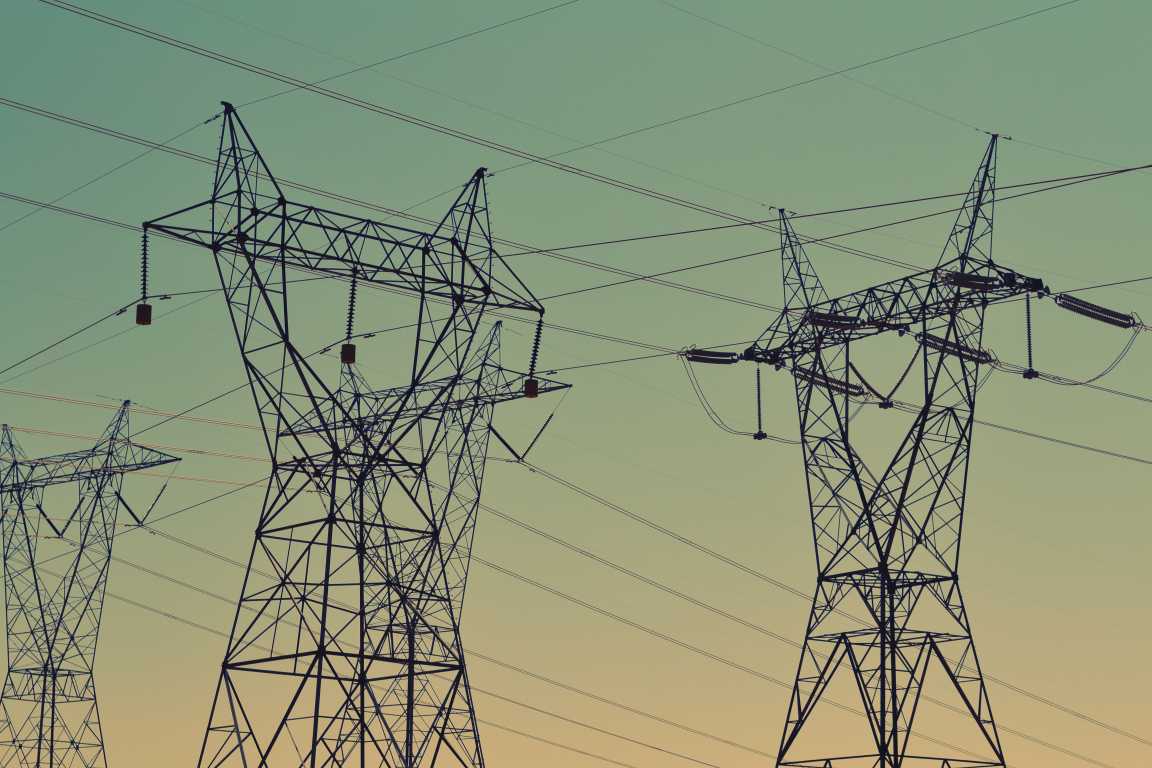
Digital transformation in the UK utilities sector
Last editedJun 20245 min read
Proliferation of digital technology in the utility market is radically changing the energy and water industries’ relationships with customers by handing the latter increased market power. This transformation is enabling customers to make informed decisions about their energy supply, coming at a time when competition in energy has lifted off and the water industry is preparing to open up a market for business users.
Services provided by Direct Debit provider, GoCardless, typify the degree to which the utility customer’s position is being strengthened through technology that takes the headache out of exercising choice. The company has brought to market a Direct Debit solution that is affordable for small businesses and powerful enough for utility-scale operations at both new entrant and incumbent levels. The GoCardless system does the following:
Enables customers to set up a Direct Debit from a desktop, mobile phone or tablet in minutes
Validates a customer’s bank details instantly to reduce the chance of failed mandates
Gives customers flexibility in frequency and dates of payments
Integrates with CRM, billing and finance systems to provide customer support with real time information on each customer's payment history
Technology-driven incentives
The benefits that digital technology promises the customer are fuelling the utilities’ eagerness to adopt it in their operations. “The greatest incentive is in how technology can benefit customers,” according to Eon.
Growth in competition in energy retail is emerging along with a new cohort of energy customers who are becoming more and more digitally connected.
“All this leads to a need to transform digitally so we can differentiate on service and digital experiences in line with rising customer expectations,” says Eon.
Digital transformation in the big six energy firms places a strong emphasis on home energy management devices with partnerships and acquisition featuring highly in their digital strategies.
RWE npower recently struck a partnership with Google-owned smart thermostat technology firm Nest
Eon has collaborated with US greentech developer, Greenwave, to produce its Eon Touch energy management system
EDF Energy has partnered with smart thermostat firm, Netatomo, while
British Gas parent company, Centrica, has acquired analytics developer, Panoramic Power, and developer of energy management technology for on-site and renewable generation, Neas, to add to its home-grown, smart heating control app, Hive.

In a recent presentation, Centrica chief, Iain Conn, points to developments in the world’s leading digital technology firms that could put utilities head-to-head with the likes of Google, Amazon and Samsung. “This is a transformational moment for the energy industry, which bears comparison to the revolution we have seen in the communications sector over the past 20 years,” says Conn.
“It’s difficult for governments to grasp the implications of these changes and challenging for businesses like ours to manage them,” he adds. He continues: “The real winner will be the consumer, and those of us who can respond to this transformation with new capabilities and imagination.”
Significant consumer benefits
Northumbrian Water CIO, James Robbins, one of Computing Magazine’s top ten CIOs, says the advent of competition in business and possibly domestic water provision will open up a significant role for digital technology in bringing on those markets. He suggests that users stand to benefit from digital technology in ways that could avert some of the disappointments that accompanied energy market opening. “The benefits in technology are tilted in favour of the customer. The shareholder will benefit but not as much as the consumer,” he says.
Beyond the high-profile digital developments in the water sector including smart metering, Robbins forecasts that advances in technology that focus on customer benefits will be the frontline in a competitive market.
He offers examples which he says illustrate Northumbrian’s use of innovation and technology to give “unrivalled” customer service. They include: bespoke billing formats, call centres that offer advice based on video images sent by customers from their to smartphones, and precise network mapping technology that will slice some £10 million off Northumbrian’s cost of locating thousands of newly acquired stretches of network connecting customers’ homes. Robbins says these developments could increase capital efficiency to improve margins and reduce bills.
Technology is seen typically as handing new-entrant utility players an instant advantage over incumbents, borne out of the newcomers’ freedom from legacy systems needing upgrades. Robbins acknowledges that the history of utility system upgrades has been “littered with failure,” notably a string of high-profile billing errors following system overhauls. But Robbins points out that the agility of the incumbents’ new rivals is offset by the established players’ experience in operating at the scale required for success in the utility game.
“We’re good at scale. We already deal with big data. New entrants often underestimate the pace of growth required,” he says. Robbins applauds the moves from the big energy players who have shown significant commitment to digital technology but says the incumbents are divided in their dedication to digital.
Bill Wilkins, chief technical officer and information officer at the UK’s leading new energy player, First Utility, agrees that digital technology brings short-term advantages for small players who can use it to “look as functional as a more mature company.” But the flip side, he says, is that “the big six have stable optimised business processes while some smaller players have yet to achieve an understanding of the causes of error and the costs inherent in the industry. We’re now through that.”
Wilkins says a commodity market like energy demands that competitors differentiate on price and service. “You have to make sure the customer gets great service and experience. Beyond service, utilities have to differentiate themselves and there is no better way to do that than through a digital offering,” he says.

Putting the customer first
As well as reducing costs through greater efficiency, digital transformation in the utility sector makes it easier to serve and engage the customer, Wilkins says. “It’s less of a nice-to-have and actually becomes a retention tool. Like Amazon in retail – customers know it works and it’s convenient. And digital makes customers understand their consumption. If you want to disengage your customers then sending them an estimated bill once a year, as is the case with some of the larger firms, would be the way to do that,” he adds.
As CIO, Wilkins says his job has transformed from a “single, inward focus on billing and cash collection” to one that is exposed to the customer. He says his role as CTO is more focused on innovation – “something that was not there in utilities 15 years ago,” he says. He offers First Utility’s Ask First “virtual agent” as an example of innovation emerging from the company. The service enables customers to quiz a robot 24/7 about their energy issues.
The falling cost of technology too has added impetus to the energy market: “What makes it cheap for a business to serve makes it more convenient for a customer to use,” he says.
What’s more, there is a growing pool of digitally skilled workers to add pace to the digital transformation in utilities. EDF Energy has set up its own “innovation accelerator”, dubbed Blue Lab, which “brings together people with skills and expertise from across the business, and beyond, to help accelerate innovation,” says EDF Energy director of innovation, Jean-Benoit Ritz. The company has located Blue Lab near Brighton where there is, according to Ritz, “the highest proportion of creative small to medium size enterprises in the UK.
“By combining these local digital skills with our knowledge and experience in energy, we’re excited about what we can achieve,” he says.
Making life simpler
Digital growth is predicted to be particularly strong in utilities with forecasts including a prediction that two thirds of all new connected devices will be in energy and water provision. As utilities migrate to smart metering, accommodate growth in localised renewable generation and make greater use of connected devices, customers from all categories will be drawn to take advantage of digital services. The perceived convention that digital is the territory of the young and high-tech literate segments of the population is fading in value. All consumers want life to be simpler.
GoCardless’ advanced payment service is a typical example of attempts to address that outlook. “Our advanced payment system gives any business – including a utility – an edge in a competitive, technology-driven market,” says vice president of sales at GoCardless Robert Whiteside. “Anything that gives the customer the confidence and capacity to take part in a market will stimulate the market to produce the goods for the customer,” he adds. Whiteside wraps up the GoCardless system’s impact: “Customers can expect ease rather than frustration when dealing with their energy supplier.”
Digital transformation is making life easier for consumers in many markets, including the utility sector. The quickest firms to adopt technology to offer flexibility, transparency and simplicity to their customers will be the contenders best equipped to lead the current pack. They will also be the first in line to take on possible big hitting new rivals from the digital technology sector.
An abridged version of this article was first published in Utility Week on December 12, 2016
Discover Direct Debit for the Digital Age
GoCardless is a simpler and smarter way for energy firms to collect payments.

